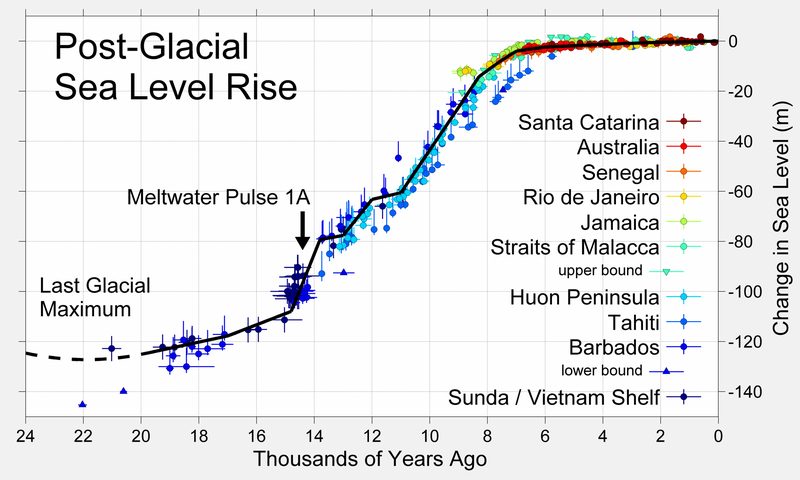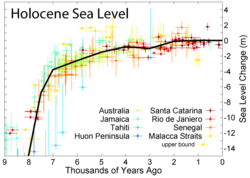Fájl:Post-Glacial Sea Level.png

Az előnézet mérete: 800 × 480 képpont További felbontások: 320 × 192 képpont | 1 024 × 615 képpont | 1 280 × 768 képpont | 1 813 × 1 088 képpont.
Eredeti fájl (1 813 × 1 088 képpont, fájlméret: 371 KB, MIME-típus: image/png)
Fájltörténet
Kattints egy időpontra, hogy a fájl akkori állapotát láthasd.
| Dátum/idő | Bélyegkép | Felbontás | Feltöltő | Megjegyzés | |
|---|---|---|---|---|---|
| aktuális | 2019. március 19., 01:36 |  | 1 813 × 1 088 (371 KB) | Dragons flight | Higher resolution version |
| 2016. november 25., 19:26 |  | 526 × 359 (19 KB) | A876 | edited to correct spelling. (also OptiPNG.) | |
| 2005. december 27., 04:20 |  | 526 × 359 (23 KB) | Angrense | Sea level variation during the last post-glacial period. Source:English version of Wikipedia. |
Fájlhasználat
Az alábbi lapok használják ezt a fájlt:
Globális fájlhasználat
A következő wikik használják ezt a fájlt:
- Használata itt: af.wikipedia.org
- Használata itt: ar.wikipedia.org
- Használata itt: ast.wikipedia.org
- Használata itt: beta.wikiversity.org
- Használata itt: be.wikipedia.org
- Használata itt: bg.wikipedia.org
- Használata itt: bn.wikipedia.org
- Használata itt: bo.wikipedia.org
- Használata itt: bs.wikipedia.org
- Használata itt: ca.wikipedia.org
- Használata itt: cs.wikipedia.org
- Használata itt: da.wikipedia.org
- Használata itt: da.wikibooks.org
- Használata itt: de.wikipedia.org
- Ozean
- Meeresspiegel
- Präboreal
- Atlantikum
- Subatlantikum
- Meeresspiegelanstieg seit 1850
- Schmelzwasserpuls 1A
- Flandrische Transgression
- Er Lannic
- Doggerland
- Wikipedia:Auskunft/Archiv/2010/Woche 01
- Subboreal
- Boreal (Klimastufe)
- Diskussion:Kontroverse um die globale Erwärmung/Archiv/005
- Benutzer:Zumthie/Fundstücke
- Diskussion:Storegga
- Letzteiszeitliches Maximum
- Allée couverte im Estuaire de la Quillimadec
- Passage Tomb auf Ringarogy Island
- Dolmen von Rostellan
- Allée couverte auf der Île Coalen
- Dolmen von Keroyal
A fájl globális használatának megtekintése



